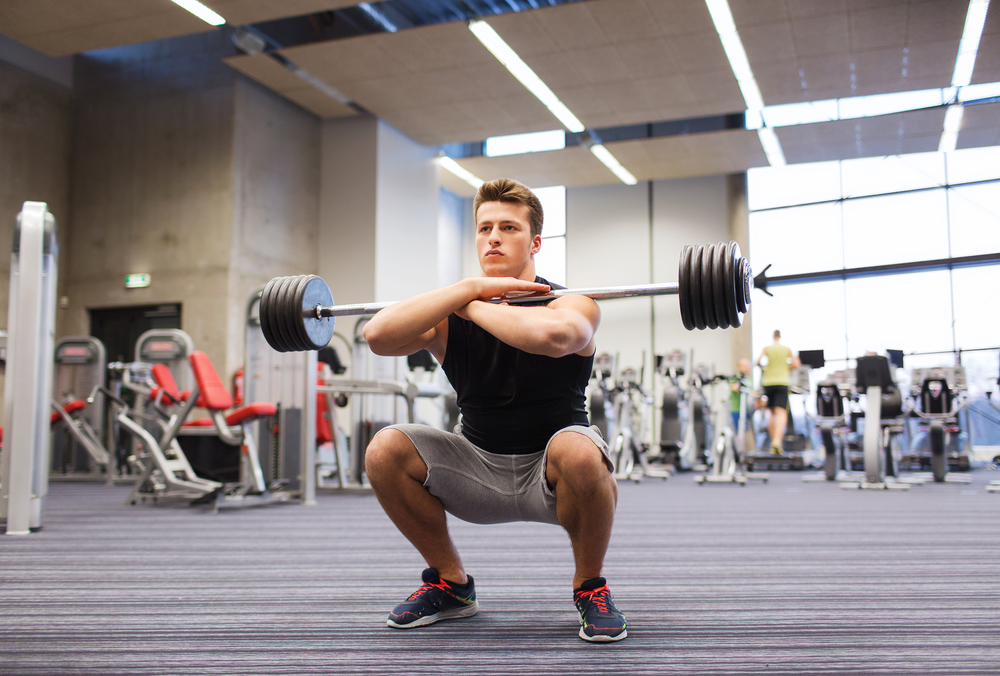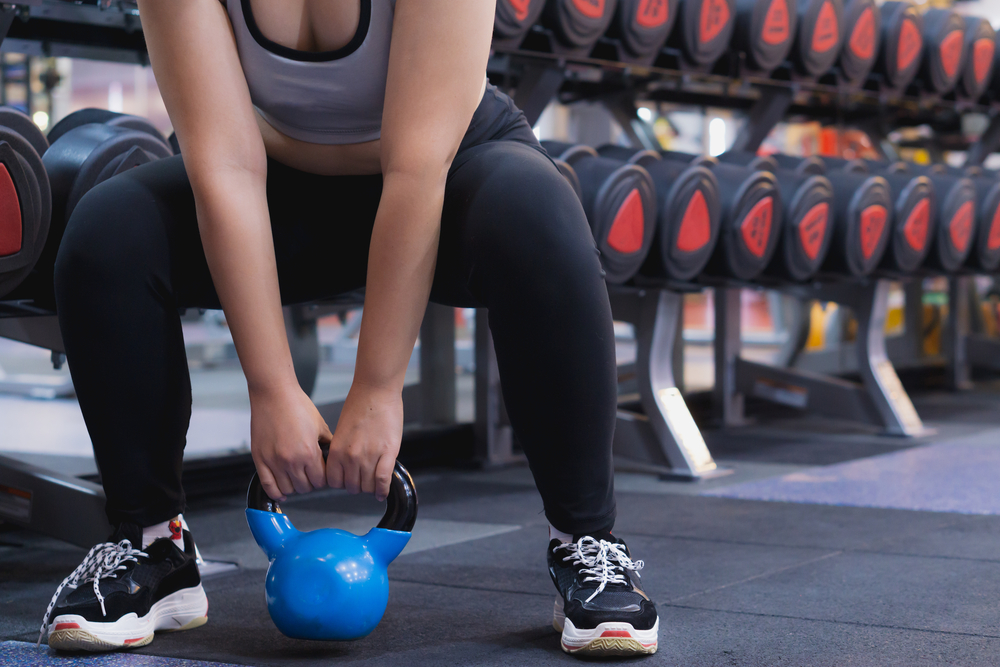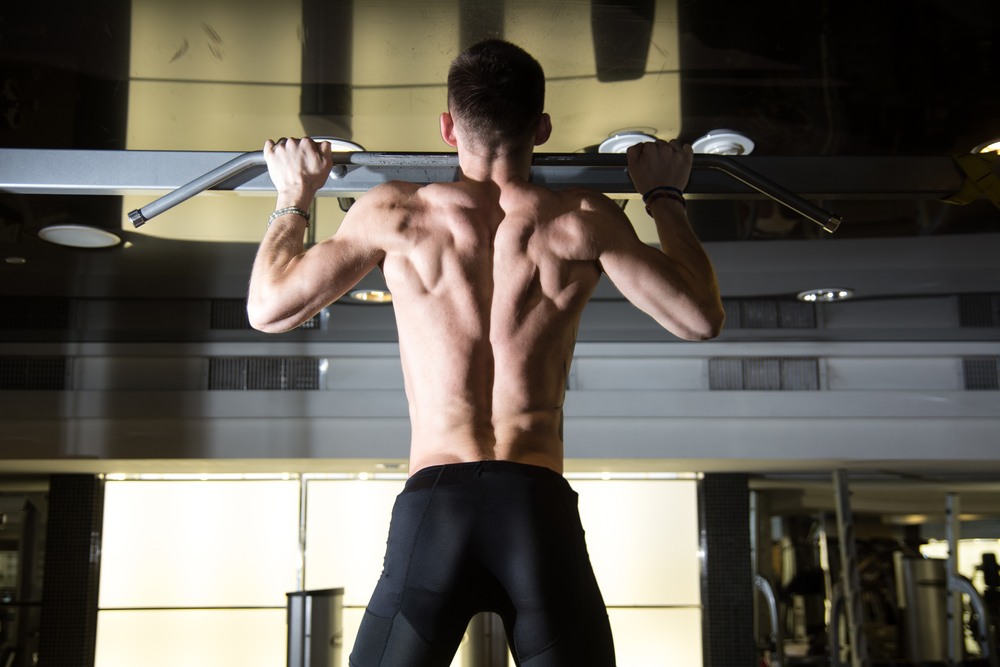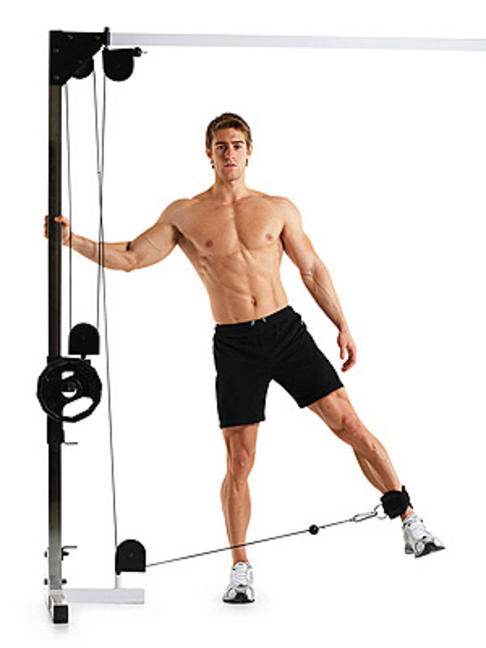
Standing cable hip extension is performed using the muscles of the buttocks and the back of the thigh. Leg swing crossover allows you to work out the gluteal region as efficiently as possible by choosing a weight corresponding to the level of training.
What muscles work during this exercise?
Among the advantages of a standing hip extension are the following:
The exercise is aimed at working out the gluteus maximus muscles. Additionally, the muscles of the back of the thigh are involved
The crossover does not fix the trajectory of the movement and the position of the body, therefore, in addition to the target muscles, the stabilizer muscles work
Try to regulate the level of load on the gluteal muscles both by changing the weight and by changing the position of the body, bending/unbending the working leg
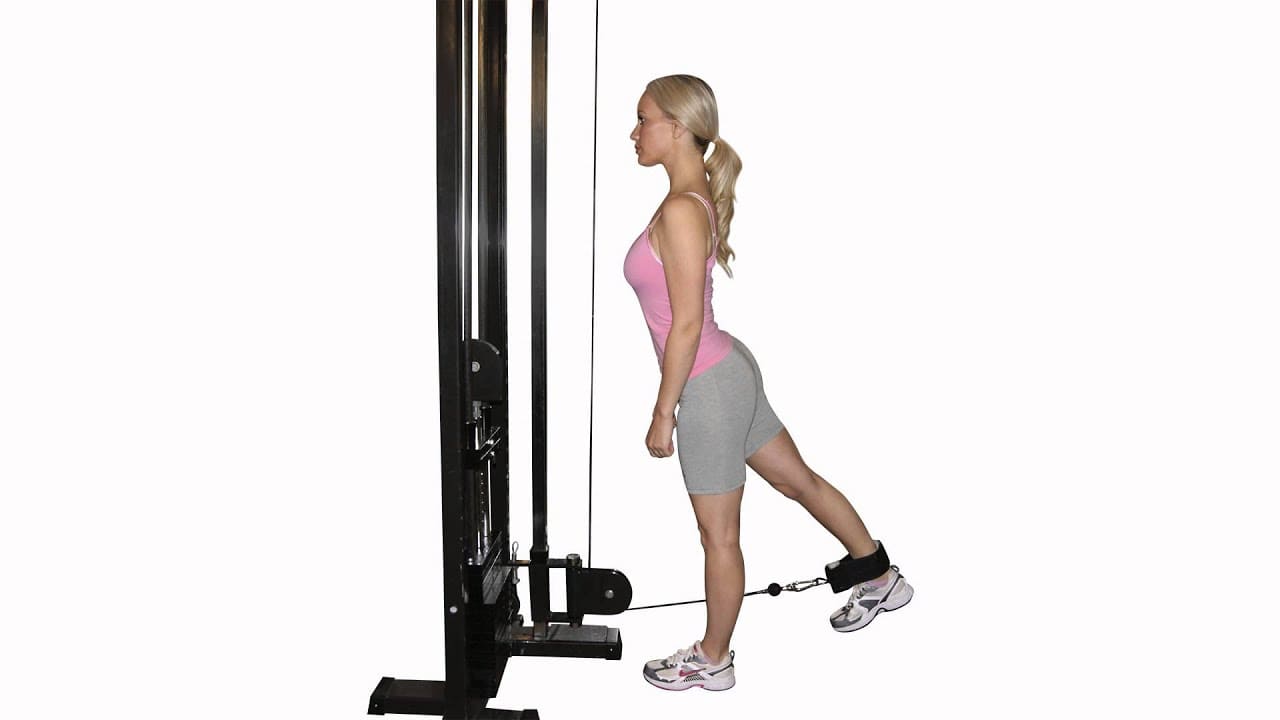
The main load during the exercise falls on the buttocks
This exercise is isolated. Ideally, the movement is carried out only in the hip joint.
Standing hip extension is an alternative to squat exercise in case of knee injuries since it does not engage the knee joints or does it minimally when bending the working leg.
Standing cable hip extension is a simple exercise. It’s available even for beginners.
Exercise technique
Leg swing crossover is performed while standing or using hands and knees. Let’s consider the first, most popular option:
Stand facing the machine support
Attach a cuff to the lower pulley cable, which will allow you to secure the cable to your foot or ankle. Pass your leg through the cuff
Grasp the support of the machine with your hands and fix your body. The pelvis should be directly above the foot of the supporting leg
Bend your working leg slightly and swing back. Remember that the gluteus muscles can pull the straight leg back 10-15 degrees from the vertical line. Next, the muscles of the back are already connected, so if you keep the body straight, do not take your leg too far
Do not twist the hip outward, perform the movement strictly backward
At the top of the movement, pause briefly and lower your leg to its original position
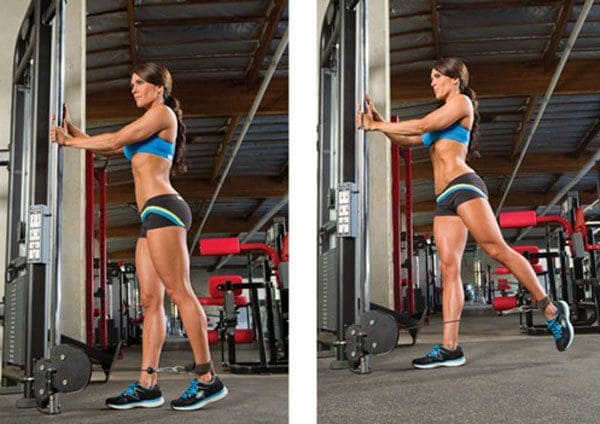
You do not need to take your leg far away if you keep the body straight
By tilting the body forward, you adjust the swing amplitude. Accordingly, the lower you bend, the greater the amplitude of movement will be. The gluteus muscle will stretch more and work more efficiently. Do not forget to control your back, natural deflection in the lower back is allowed, but no more. You don’t need to arch your back.
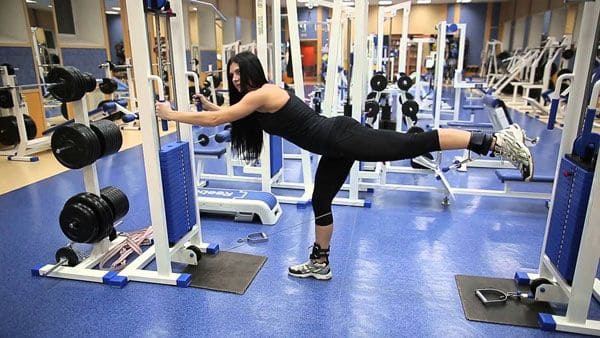
The tilt of the body increases the amplitude of movement
If you put small support under your supporting leg, for example, barbell weight, you can swing with a relatively straight leg, almost without bending it at the knee.
Leg pull front looks like this:
Secure the end of the cable to the foot of your working leg with a cuff or any handle you feel comfortable with
Facing the support, lower yourself into a squat and move to a position on all fours with a straight back. Lean on your palms and knees. Stand on the floor with a folded towel or mat under the knee of your supporting leg, or use a horizontal bench. This is the starting position
Extend your working leg and lift it with the heel up. Hold for a second, concentrating on tightening your glutes
Return to starting position
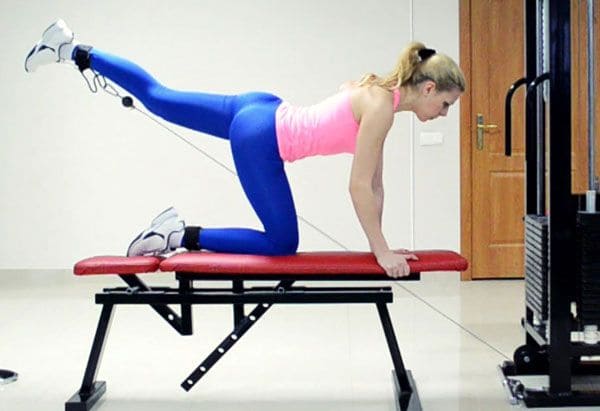
A variation of the exercise using a horizontal bench
Incorporate exercise in the training process
Standing hip extension should be performed at the end of a comprehensive hip and glute workout. It works well for the gluteus muscles.
Choose a light or medium weight. You should be able to do 2-3 sets of 12-15 reps on each leg.
Combine the Standing hip extension with gluteus medius exercises for maximum effect. In particular, the gluteus medius muscles are involved in hip abduction exercises. Do them together!



